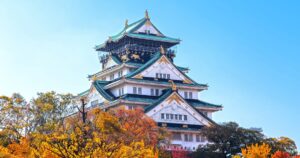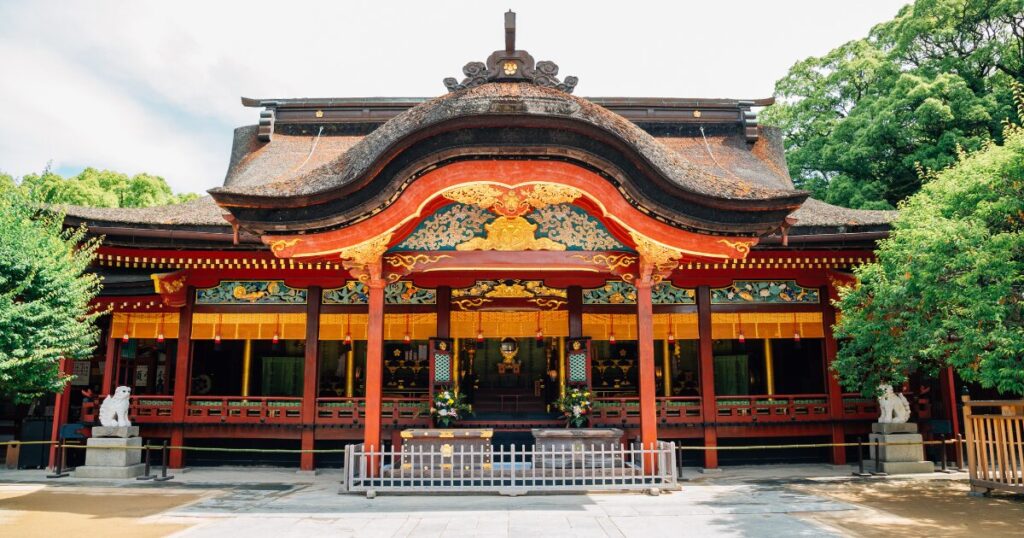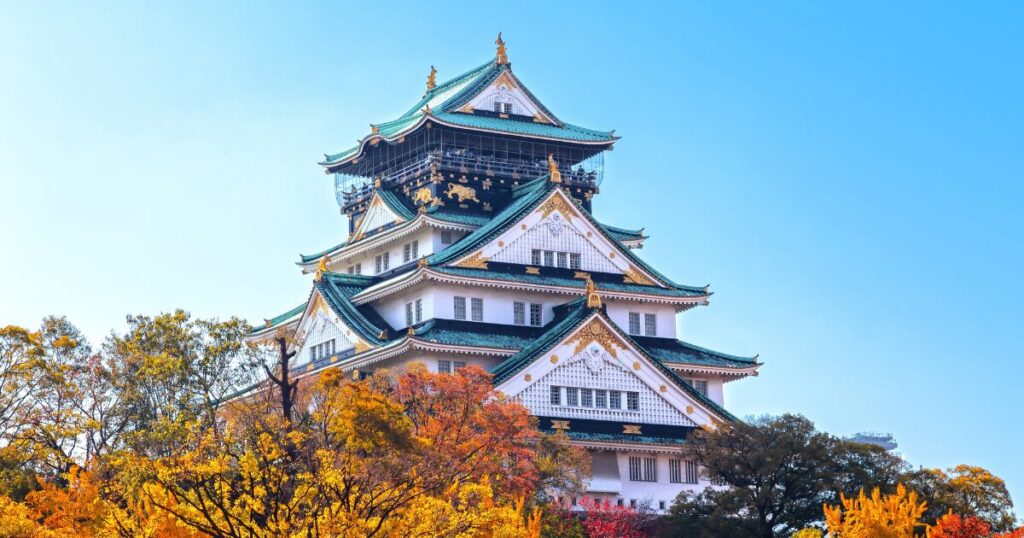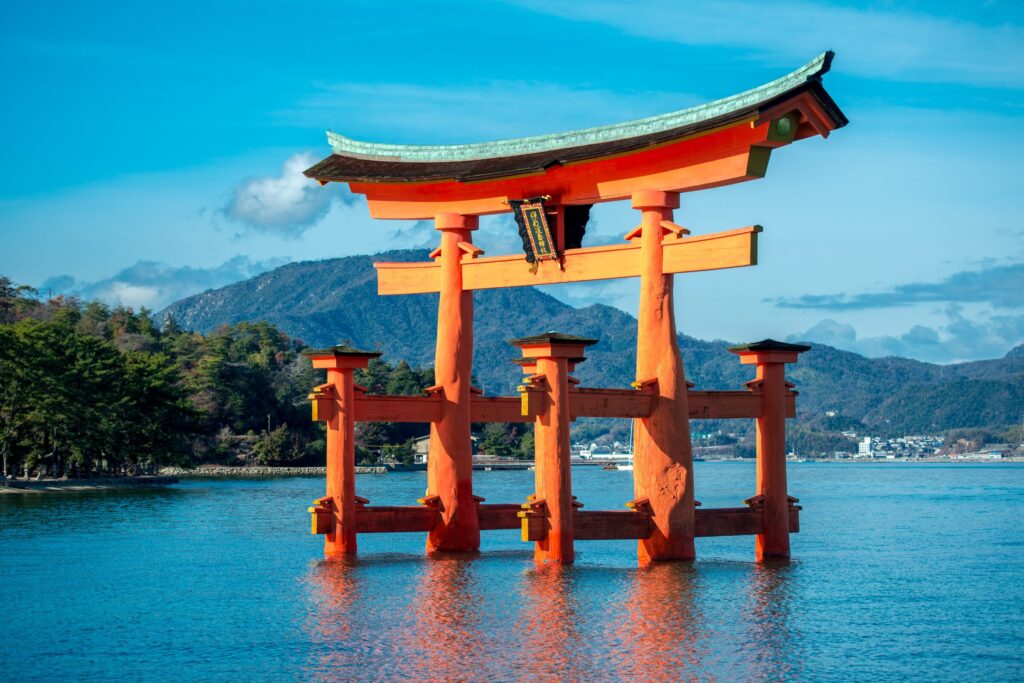When Japanese people think of Hokkaido, two things often come to mind: stunning nature and mouth-watering food. Hokkaido’s reputation for fresh, high-quality produce and seafood is so deeply ingrained in Japanese culture that anything labeled “Hokkaido-grown” or “Hokkaido-caught” automatically earns a premium status across the country. From sweet corn and creamy dairy products to the freshest sea urchins and crabs, Hokkaido’s bounty is unparalleled. For food lovers, this means one thing: indulge in as much of Hokkaido’s culinary treasures as possible!
But let’s not forget—Hokkaido’s appeal goes far beyond food. Its vast, untamed landscapes make it one of Japan’s most nature-rich regions. Picture this: towering volcanic mountains with hiking trails that lead to panoramic views, crystal-clear lakes nestled in the middle of national parks, and fields of colorful flowers stretching as far as the eye can see. And in the winter? The region transforms into a snowy wonderland, perfect for skiing, snowboarding, or simply soaking in an outdoor hot spring surrounded by snow-covered forests. Hokkaido’s natural beauty is the perfect backdrop for any adventure, whether you’re a thrill-seeker or just looking to relax.
In this article, we’ll guide you through some of Hokkaido’s most iconic areas and attractions, focusing on the hidden gems and local favorites that make this northern paradise so special. Whether you’re a first-time visitor or a seasoned traveler, there’s always something new to discover in Hokkaido.
- 1. Sapporo Area (札幌エリア)
- New Chitose Airport (新千歳空港)
- Hokkaido Shrine (北海道神宮)
- Maruyama Park (円山公園)
- Nijo Market (二条市場)
- Moerenuma Park (モエレ沼公園)
- Jozankei Onsen (定山渓温泉)
- Susukino (すすきの)
- JR Tower Observation Deck T38 (JRタワー展望室T38)
- Mount Moiwa (藻岩山)
- Odori Park (大通公園)
- Sapporo Beer Museum (サッポロビール博物館)
- Sapporo Clock Tower (札幌市時計台)
- Former Hokkaido Government Office (北海道庁旧本庁舎)
- Okurayama Ski Jump Stadium (大倉山展望台)
- Sapporo Hitsujigaoka Observation Hill (さっぽろ羊ヶ丘展望台)
- Hokkaido Ballpark F Village (北海道ボールパークFビレッジ)
- Sapporo Maruyama Zoo (札幌市円山動物園)
- 2. Otaru, Yoichi & Shakotan Area (小樽・余市・積丹エリア)
- 3. Noboribetsu, Toya & Niseko Area (登別・洞爺・ニセコエリア)
- 4. Hakodate Area (函館エリア)
- 5. Asahikawa, Sounkyo & Tenninkyo Area (旭川・層雲峡・天人峡エリア)
- 6. Wakkanai, Rishiri & Rebun Area (稚内・利尻・礼文エリア)
- 7. Furano & Biei Area (富良野・美瑛エリア)
- 8. Obihiro & Tokachi Area (帯広・十勝エリア)
- 9. Abashiri & Shiretoko Area (網走・知床エリア)
- 10. Kushiro & Akan Area (釧路・阿寒エリア)
1. Sapporo Area (札幌エリア)

Sapporo perfectly blends urban excitement with the calm of nature, offering something for every traveler. As the capital of Hokkaido, the city is rich in history, culture, and modern attractions. Start your journey with a visit to Hokkaido Shrine, nestled in the serene Maruyama Park. This peaceful spot is particularly beautiful in spring when the cherry blossoms are in full bloom. For those interested in local flavors, Nijo Market is the place to indulge in the freshest seafood, including Hokkaido’s famous crabs and sea urchin.
For a mix of nature and relaxation, head to Jozankei Onsen, where you can unwind in one of the many hot springs surrounded by lush mountains. If you’re looking for panoramic views of the city, don’t miss the JR Tower Observation Deck T38 or venture up Mount Moiwa for a breathtaking sight of Sapporo’s skyline. At night, the city comes alive in Susukino, one of Japan’s most famous entertainment districts. From Sapporo Beer Museum, where you can learn about Hokkaido’s brewing history, to the iconic Sapporo Clock Tower, the city offers a unique blend of old and new that’s sure to leave a lasting impression.
New Chitose Airport (新千歳空港)
Hokkaido’s New Chitose Airport is more than just a gateway to the region; it’s an attraction in its own right. The airport boasts a wide range of amenities, including an on-site hot spring (New Chitose Airport Onsen), a chocolate factory (Royce’ Chocolate World), and numerous shops selling local specialties. With easy access to public transportation, it serves as an excellent starting point for any Hokkaido adventure.
- Official Website: https://www.hokkaido-airports.com/en/new-chitose/spend/
Hokkaido Shrine (北海道神宮)
Located in Maruyama Park, Hokkaido Shrine is a peaceful retreat in the bustling city of Sapporo. Visitors can explore the lush grounds, especially beautiful during the cherry blossom season. This Shinto shrine is dedicated to Emperor Meiji and symbolizes Hokkaido’s spiritual history.
Maruyama Park (円山公園)

Adjacent to the Hokkaido Shrine, Maruyama Park is a popular spot for both locals and tourists. Known for its tranquil atmosphere and scenic beauty, the park is particularly famous during spring for hanami (cherry blossom viewing) and in autumn for its colorful foliage.
Nijo Market (二条市場)

A must-visit for food lovers, Nijo Market is a bustling seafood market in the heart of Sapporo. Visitors can enjoy freshly caught seafood, including Hokkaido’s famous crab, sea urchin, and salmon roe, or dine in one of the local eateries offering fresh sushi and sashimi.
- Official website: https://nijomarket.com/en/top_en/
- Address: Minami 3-jo ~ Higashi 1-chome, Chuo-ku, Sapporo
- Business Hours: 7:00 – 17:00
Moerenuma Park (モエレ沼公園)
Designed by world-renowned artist Isamu Noguchi, Moerenuma Park is a large, beautifully designed public park that merges nature with art. Highlights include the Glass Pyramid, a symbol of the park, and Mount Moere, a man-made hill offering panoramic views of the surroundings.
Jozankei Onsen (定山渓温泉)

Nestled in a valley just outside of Sapporo, Jozankei Onsen is a popular hot spring resort. Visitors can soak in natural hot springs while enjoying the spectacular views of the surrounding mountains, which are especially picturesque during autumn.
Susukino (すすきの)

Susukino is Sapporo’s entertainment district, filled with restaurants, bars, and nightclubs. Known for its vibrant nightlife, it’s also a great spot to try Sapporo’s famous miso ramen at one of the many ramen shops in the area.
JR Tower Observation Deck T38 (JRタワー展望室T38)
Offering a panoramic view of Sapporo, JR Tower T38 provides a stunning lookout from 38 floors above ground. It’s an excellent spot to capture the beauty of Sapporo’s skyline both day and night.
Mount Moiwa (藻岩山)

A short drive from the city center, Mount Moiwa offers one of the best night views in Japan. Visitors can take the ropeway to the summit and enjoy breathtaking panoramic views of Sapporo and Ishikari Bay, especially enchanting after dark.
Odori Park (大通公園)

Stretching through the heart of Sapporo, Odori Park is the city’s central green space and the venue for many of its major events, including the famous Sapporo Snow Festival. It’s a great place to take a relaxing stroll and see seasonal flowers or ice sculptures in winter.
Sapporo Beer Museum (サッポロビール博物館)
Learn about the history of one of Japan’s most iconic beers at the Sapporo Beer Museum. Visitors can explore the brewing process, see historical exhibits, and, of course, sample some of Sapporo’s finest brews.
- Official website: https://www.sapporobeer.jp/english/brewery/s_museum/
- Address: 9-2-10 Kitananajo-Higashi, Higashi-ku, Sapporo-shi, Hokkaido, 065-0007
- Holidays: Open year-round (excluding December 31)
Sapporo Clock Tower (札幌市時計台)

A symbol of Sapporo, the Clock Tower is one of the city’s most historic buildings. Built in 1878, it’s a charming landmark that showcases the city’s Western influence during the Meiji period.
Former Hokkaido Government Office (北海道庁旧本庁舎)

This striking red brick building, known as the “Red Brick Office,” is a reminder of Hokkaido’s early development. Now a museum, it’s a great place to learn about the island’s history and architecture.
Okurayama Ski Jump Stadium (大倉山展望台)
Famous for hosting the 1972 Winter Olympics, Okurayama Ski Jump Stadium offers visitors the chance to experience the thrill of ski jumping (without actually jumping!). A lift takes you to the observation deck for a fantastic view of Sapporo.
Sapporo Hitsujigaoka Observation Hill (さっぽろ羊ヶ丘展望台)
Famous for its statue of Dr. William S. Clark, an American educator who played a key role in Hokkaido’s development, Hitsujigaoka Observation Hill offers panoramic views of the countryside. Visitors can also see grazing sheep, adding to the rustic charm of the area.
Hokkaido Ballpark F Village (北海道ボールパークFビレッジ)
This new attraction combines sports, entertainment, and tourism. F Village is home to the Hokkaido Nippon-Ham Fighters baseball team and features activities for visitors of all ages, from interactive exhibits to baseball-themed experiences.
Sapporo Maruyama Zoo (札幌市円山動物園)
One of the oldest zoos in Japan, Maruyama Zoo is a family-friendly destination showcasing animals from cold climates, such as polar bears and red pandas. The zoo focuses on conservation and education, making it a meaningful visit for wildlife enthusiasts.
2. Otaru, Yoichi & Shakotan Area (小樽・余市・積丹エリア)

The Otaru area is a romantic and scenic destination just a short trip from Sapporo. Otaru Canal, lined with historic warehouses, offers a nostalgic atmosphere, especially when lit by the soft glow of gas lamps in the evening. The canal reflects the city’s rich maritime history, once serving as a busy port for trade. Today, it’s a lovely spot for a leisurely walk or a canal cruise, perfect for soaking in the town’s charm. A short trip from Otaru is Yoichi, home to the famous Nikka Whisky Distillery, where you can taste some of Japan’s finest whiskies and learn about the fascinating history of its founder, Masataka Taketsuru, who brought Scottish whisky-making techniques to Japan.
Shakotan Peninsula is a must-visit for nature lovers. Known for its rugged cliffs and crystal-clear waters, it’s an adventurer’s paradise. The highlight of the area is the stunning Cape Kamui, where a scenic walking trail leads you along dramatic cliffs with views of the surrounding ocean. For an even more unique experience, take a boat tour to explore the mysterious Blue Cave, a hidden gem with vibrant blue waters that will leave you in awe. Whether you’re exploring Otaru’s quaint streets or seeking adventure along Shakotan’s coastline, this area offers a perfect balance of history, culture, and natural beauty.
Otaru Canal (小樽運河)
The picturesque Otaru Canal is a remnant of the city’s past as a bustling port. Now a romantic destination, visitors can stroll along the canal, enjoy charming cafes, and take a scenic boat ride to see the historic warehouses that line the water.
Blue Cave (青の洞窟)
A natural wonder off the coast of Shakotan Peninsula, the Blue Cave is famous for the dazzling blue hues that light up its interior. Tours allow visitors to explore this hidden gem by boat, offering an unforgettable marine experience.
Nikka Whisky Yoichi Distillery (ニッカウヰスキー余市蒸溜所)
Whisky lovers shouldn’t miss a visit to Nikka Whisky’s Yoichi Distillery. Founded by Masataka Taketsuru, the father of Japanese whisky, this distillery offers tours showcasing traditional production methods, and tastings of their award-winning spirits.
Cape Kogane (黄金岬)

Located on the Shakotan Peninsula, Cape Kogane is renowned for its golden cliffs and breathtaking views of the Sea of Japan. It’s a great spot for hiking, photography, or simply soaking in the natural beauty of the rugged coastline.
Cape Kamui (神威岬)

Cape Kamui is a dramatic cliffside viewpoint offering stunning views over the ocean. Visitors can hike to the tip of the cape to experience panoramic vistas of the deep blue sea, and perhaps spot dolphins or other marine wildlife.
3. Noboribetsu, Toya & Niseko Area (登別・洞爺・ニセコエリア)

The Noboribetsu, Toya, and Niseko area is Hokkaido’s playground for relaxation and adventure, offering a wide range of experiences that cater to all types of travelers. Noboribetsu Onsen is renowned for its therapeutic hot springs, fed by the mineral-rich waters of Hell Valley (Jigokudani). As you explore the steaming, otherworldly landscape of Hell Valley, you’ll understand why it’s one of Japan’s top onsen destinations. After a soothing soak, head to Lake Toya, a caldera lake with stunning views of Mount Usu and its surrounding volcanic landscape. The lake is known for its crystal-clear waters, and a boat cruise offers the perfect way to take in the peaceful scenery.
In winter, Niseko becomes a world-renowned ski resort, drawing snow enthusiasts from across the globe for its legendary powder snow. But Niseko isn’t just for winter sports. In the warmer months, the area transforms into an outdoor playground with hiking, rafting, and mountain biking. If you’re looking for a slower pace, the surrounding hot springs offer a relaxing escape year-round. Whether you’re carving through fresh powder or enjoying the serene waters of Lake Toya, this region offers a perfect mix of adventure and relaxation.
Noboribetsu Onsen (登別温泉)
One of Hokkaido’s most famous hot spring resorts, Noboribetsu Onsen is known for its healing mineral waters and dramatic landscapes. The volcanic valley, called Jigokudani or “Hell Valley,” emits sulfurous steam, giving visitors a glimpse of the raw power beneath the earth’s surface. The numerous hot spring baths offer a relaxing and rejuvenating experience for travelers.
Lake Toya (洞爺湖)
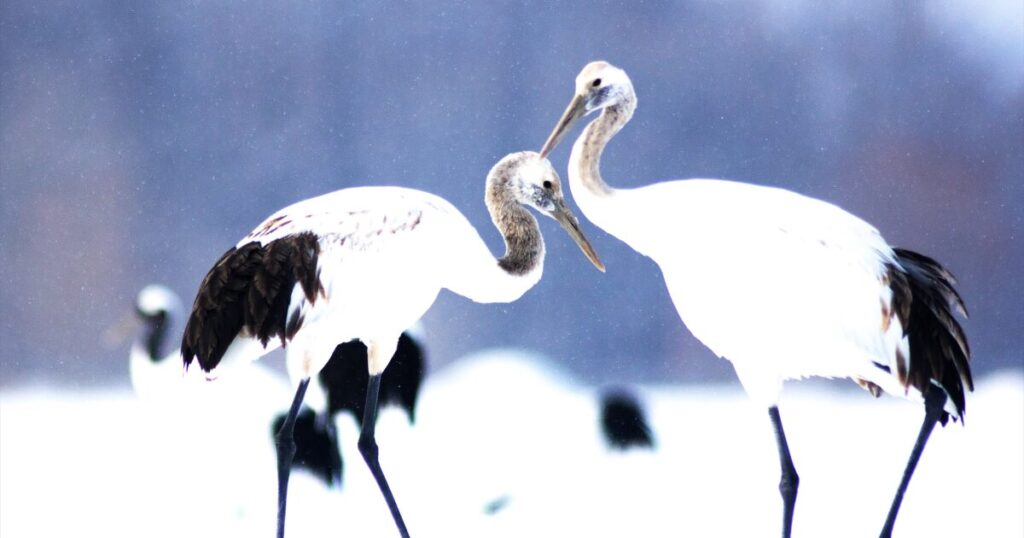
Lake Toya is a beautiful caldera lake with crystal-clear waters surrounded by mountains, including the active volcano Mount Usu. The area is part of the Shikotsu-Toya National Park and offers outdoor activities like hiking, camping, and sightseeing cruises. The surrounding hot spring resorts make it a perfect getaway for nature lovers.
Toya Onsen (洞爺湖温泉)
Located on the shores of Lake Toya, Toya Onsen is a popular hot spring destination. Visitors can enjoy the hot baths while overlooking the tranquil lake and its stunning sunsets. The town also hosts nightly fireworks displays during the summer months, adding a magical touch to the visit.
Lake Toya Ranch (レイクトーヤランチ)
For an authentic outdoor experience, Lake Toya Ranch offers horseback riding with breathtaking views of the lake and surrounding countryside. This family-friendly attraction allows visitors to connect with nature and enjoy the wide-open spaces of Hokkaido.
Mount Yotei (羊蹄山)
Often referred to as “Ezo Fuji” for its resemblance to Mount Fuji, Mount Yotei is an iconic stratovolcano that dominates the Niseko landscape. It’s a popular destination for hiking during the summer and for skiing or snowboarding on its slopes in the winter. The panoramic views from the summit are truly worth the effort.
Youtei Outdoor (Youtei Outdoor)
For adventure seekers, Youtei Outdoor offers thrilling outdoor activities like rafting, canyoning, and mountain biking around Mount Yotei and the Niseko area. Their guided tours provide both beginners and experts with opportunities to explore Hokkaido’s wild terrain.
Niseko Onsenkyo (ニセコ温泉郷)
Niseko Onsenkyo is a collection of hot spring resorts scattered throughout the Niseko area. Known for its world-class ski resorts, Niseko is equally impressive for its hot springs, where visitors can soak in outdoor baths while surrounded by snow-capped mountains in the winter.
Lake Shikotsu (支笏湖)
Lake Shikotsu, another caldera lake in Hokkaido, is known for having some of the clearest waters in Japan. Part of the Shikotsu-Toya National Park, the lake is a great destination for kayaking, snorkeling, and even scuba diving. The lakeside hot spring resorts provide a relaxing retreat after a day of outdoor adventure.
Upopoy (ウポポイ)
Upopoy, located near Lake Shikotsu, is a national museum and park dedicated to the Ainu, the indigenous people of Hokkaido. Visitors can learn about Ainu culture through interactive exhibits, traditional performances, and hands-on workshops, making it an enriching cultural experience.
4. Hakodate Area (函館エリア)
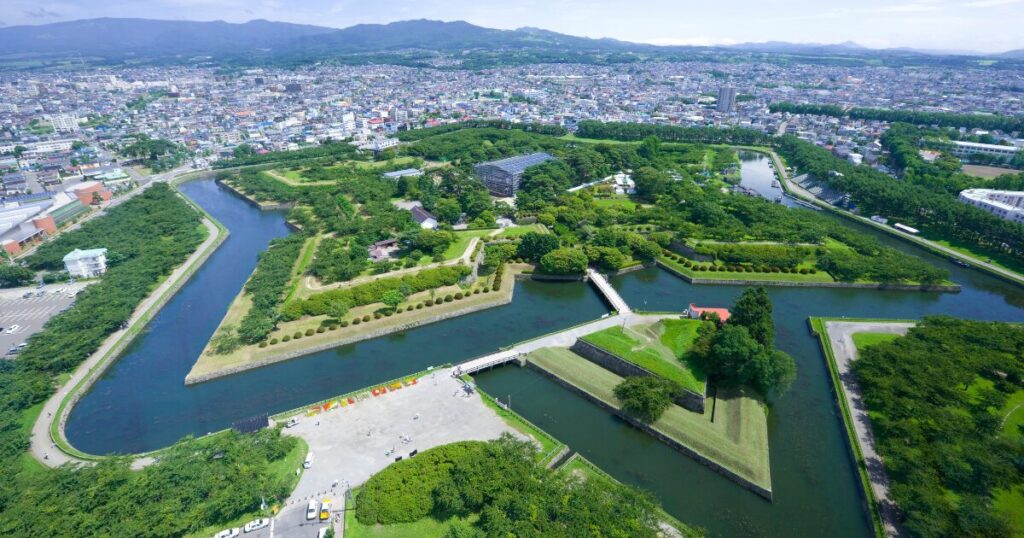
Hakodate is a port city with a rich blend of historical and cultural treasures. One of its most iconic attractions is Mount Hakodate, offering a spectacular night view that ranks among the top three in Japan. The twinkling lights of the city against the backdrop of the surrounding sea create an unforgettable sight. History enthusiasts will enjoy exploring Goryokaku, a star-shaped fort that played a key role in Japan’s Meiji Restoration. The fort is now a beautiful public park, and in spring, its thousands of cherry trees make it one of Hokkaido’s top cherry blossom viewing spots.
The Kanemori Red Brick Warehouses, once the hub of Hakodate’s international trade, have been transformed into a lively shopping and dining area where you can sample local delicacies and shop for unique souvenirs. If relaxation is what you seek, head to Yunokawa Onsen, where you can soak in hot springs with views of the sea. Hakodate’s mix of history, stunning views, and relaxing onsen make it a perfect destination for travelers looking to experience the best of Hokkaido’s past and present.
Mount Hakodate (函館山)

Mount Hakodate offers one of the best panoramic views in Japan, especially at night when the city lights up, creating a magical sight. Visitors can take a cable car to the top for breathtaking vistas of Hakodate city, the surrounding bay, and the Tsugaru Strait. It’s a must-visit for anyone in the area.
Hakodate Orthodox Church (函館ハリストス正教会)
Founded in 1859, Hakodate Orthodox Church is one of the oldest Russian Orthodox churches in Japan. Its striking white exterior with green onion domes stands out against the historic Motomachi district. Visitors can explore the church’s beautiful architecture and serene atmosphere.
Kanemori Red Brick Warehouses (金森赤レンガ倉庫)

These historical warehouses in Hakodate’s bay area have been repurposed into a charming shopping and dining complex. Visitors can enjoy local seafood, shop for unique Hokkaido souvenirs, or explore the art galleries and cafes housed within the beautifully preserved red-brick buildings.
Goryokaku Park (五稜郭公園)
Goryokaku is a star-shaped fort built in the 19th century and now a public park. It’s especially famous for its cherry blossoms in spring, when the park’s 1,600 cherry trees come into full bloom. Visitors can also climb the nearby Goryokaku Tower for a bird’s-eye view of the star-shaped moat and the city.
Yunokawa Onsen (湯の川温泉)
Located just outside Hakodate city, Yunokawa Onsen is a seaside hot spring resort offering relaxing baths with ocean views. Visitors can also spot the famous hot spring-bathing monkeys at the Hakodate Tropical Botanical Garden, making it a unique stop for both relaxation and entertainment.
5. Asahikawa, Sounkyo & Tenninkyo Area (旭川・層雲峡・天人峡エリア)

Asahikawa is known for its lively city atmosphere and its role as a gateway to Hokkaido’s majestic Daisetsuzan National Park. A visit to Asahiyama Zoo, famous for its up-close and interactive animal exhibits, is a must for families and wildlife enthusiasts. The zoo’s penguin walk in winter is especially popular, offering a chance to see these charming creatures up close. From Asahikawa, venture into the nearby mountains to discover the natural beauty of Sounkyo Gorge. The gorge is home to stunning waterfalls like Ryusei and Ginga Falls, which cascade down the cliffs, creating a dramatic and serene landscape.
Tenninkyo offers a more tranquil retreat, with its secluded hot springs and hiking trails that wind through dense forests and along riverbanks. The area is a perfect destination for those looking to escape into nature and enjoy the peaceful side of Hokkaido. Whether you’re exploring the city’s attractions or venturing into the wild beauty of Daisetsuzan National Park, Asahikawa and its surrounding areas provide a diverse range of experiences for all types of travelers.
Sounkyo Gorge (層雲峡)

Sounkyo Gorge, located in the Daisetsuzan National Park, is a breathtaking natural area known for its steep cliffs and stunning waterfalls. The most famous waterfalls, Ryusei and Ginga, are must-see attractions. Visitors can hike through the gorge or take a relaxing onsen bath at one of the many hot spring resorts in the area.
Sounkyo Onsen (層雲峡温泉)

After exploring the rugged beauty of Sounkyo Gorge, visitors can unwind in the hot springs at Sounkyo Onsen. Surrounded by nature, the hot spring baths offer a serene and therapeutic experience, perfect for rejuvenating after a day of hiking or sightseeing.
Ryusei & Ginga Waterfalls (流星の滝・銀河の滝)
These twin waterfalls, located in Sounkyo Gorge, are among the most spectacular in Hokkaido. Ryusei (“Meteor”) Falls is known for its powerful cascade, while Ginga (“Galaxy”) Falls is more graceful, with water trickling down the rocks like thin threads. Together, they create a stunning natural display.
Daisetsuzan National Park (大雪山国立公園)
Daisetsuzan is Hokkaido’s largest national park, offering vast wilderness, towering mountains, and an abundance of wildlife. It’s a paradise for nature lovers and outdoor enthusiasts, with activities ranging from hiking and climbing to bird watching and hot spring bathing.
Tenninkyo (天人峡)
Tenninkyo is a secluded hot spring area located deep within the Daisetsuzan National Park. Visitors come here to relax in the natural hot springs while surrounded by dramatic mountain scenery. Tenninkyo is also a gateway to some excellent hiking trails, including routes to nearby waterfalls.
Mount Asahidake (旭岳)
Mount Asahidake, the highest peak in Hokkaido, is a popular destination for hikers and nature lovers. The Asahidake Ropeway takes visitors close to the summit, where they can enjoy alpine scenery, sulfurous fumaroles, and stunning views of the surrounding mountains. In winter, it’s a prime location for skiing and snowshoeing.
Asahiyama Zoo (旭川市旭山動物園)
One of Japan’s most famous zoos, Asahiyama Zoo is known for its unique animal exhibits, allowing visitors to see wildlife up close in naturalistic settings. The zoo is home to polar bears, penguins, and red pandas, among many other species, and is especially popular during the winter for its penguin parade.
6. Wakkanai, Rishiri & Rebun Area (稚内・利尻・礼文エリア)

Wakkanai is Japan’s northernmost city, and it offers a sense of adventure and remoteness that is hard to find elsewhere. Standing at Cape Soya, the northernmost point of Japan, you can gaze out across the sea toward Russia on a clear day, giving you a true sense of the edge of the world. Wakkanai’s rugged coastline and windswept landscapes are perfect for those who enjoy the outdoors. Just off the coast, the islands of Rishiri and Rebun are famous for their breathtaking natural beauty.
Rishiri Island is dominated by Mount Rishiri, a dormant volcano that offers challenging hikes and stunning views of the surrounding sea. The island’s pristine nature and quiet atmosphere make it a haven for those seeking peace and solitude. Rebun Island, known as the “floating island of flowers,” is covered in colorful wildflowers during the summer months, attracting nature lovers and photographers. Whether you’re hiking up Mount Rishiri or wandering through Rebun’s flower-filled meadows, this area offers a truly unique and unforgettable experience of Hokkaido’s wild and untouched landscapes.
Cape Soya (宗谷岬)
Cape Soya is Japan’s northernmost point, offering sweeping views of the Sea of Okhotsk. On a clear day, you can even see the Russian island of Sakhalin in the distance. Visitors can explore the Cape Soya Monument and learn about the region’s historical significance, including its role in WWII.
Rishiri Island (利尻島)
Rishiri Island is a volcanic island known for its stunning landscapes, dominated by Mount Rishiri, an extinct volcano. The island is a haven for hikers and nature lovers, offering trails with spectacular views of the sea and surrounding islands. Rishiri’s famous kelp is also a must-try local specialty.
Rebun Island (礼文島)
Located just off the coast of Rishiri Island, Rebun Island is renowned for its alpine flowers, which bloom throughout the summer months. The island offers scenic hiking trails that lead through rolling hills, along dramatic coastlines, and past beautiful flower fields. It’s an ideal destination for eco-tourism.
7. Furano & Biei Area (富良野・美瑛エリア)

The Furano and Biei area is known for its breathtaking natural beauty, with rolling hills, endless flower fields, and stunning seasonal landscapes. In the summer, the lavender fields of Farm Tomita attract visitors from all over the world, with their vibrant purple hues and sweet fragrance filling the air. The surrounding hills of Biei are often referred to as a “patchwork” of different crops, creating a picturesque mosaic that changes with the seasons. Whether you’re driving through the scenic Patchwork Road or enjoying a hot air balloon ride for a bird’s-eye view, the area’s landscapes are simply stunning.
In winter, Furano transforms into a snowy paradise, attracting skiers and snowboarders with its excellent slopes and powder snow. One of the area’s hidden gems is the Blue Pond in Biei, a man-made pond with striking blue waters that remain a beautiful shade of blue year-round. The pond, with its surreal appearance, has become a popular spot for photographers and nature lovers alike. Whether you’re visiting in summer or winter, Furano and Biei’s natural beauty will captivate your heart and leave you longing to return.
Blue Pond (白金青い池)

The Blue Pond, located near Biei, is famous for its vivid turquoise waters, which change color depending on the season and weather. The surreal beauty of the pond, with its standing dead trees reflected in the water, makes it a favorite spot for photographers and nature lovers.
Farm Tomita (ファーム富田)
Farm Tomita is one of Hokkaido’s most iconic destinations, known for its vast lavender fields that bloom in summer. Visitors can stroll through the colorful flower fields, enjoy lavender-flavored soft serve ice cream, and purchase lavender-scented souvenirs to take home.
Patchwork Road (パッチワークの路)

The Patchwork Road in Biei is a scenic drive that passes through rolling farmland, where fields of different crops create a patchwork of colors and textures. The area is especially beautiful in summer and autumn, and visitors can stop at various viewpoints to take in the idyllic rural landscape.
Unkai Terrace (雲海テラス)
Unkai Terrace in Tomamu offers a magical view of a sea of clouds (unkai) that forms around the mountains at sunrise. Best viewed from May to October, visitors can take a gondola ride up to the terrace, where the sight of clouds spreading across the horizon is unforgettable. The tranquil atmosphere, paired with stunning vistas and a cozy café, makes it a favorite spot for nature lovers and photographers.
Hokuryu Town Sunflower Fields (北竜町ひまわりの里)

Hokuryu Town’s Sunflower Fields bloom with over 1.5 million sunflowers each July and August. Visitors can stroll through vast yellow fields, enjoy sunflower mazes, and shop for local sunflower products like oil and snacks. The cheerful scenery and summer atmosphere make this a popular destination for families and nature enthusiasts alike.
8. Obihiro & Tokachi Area (帯広・十勝エリア)

Obihiro and the Tokachi region offer a delightful combination of gourmet experiences and outdoor activities. The area is famous for its agricultural produce, and food lovers will enjoy sampling local delicacies like Tokachi beef, fresh dairy products, and a wide range of vegetables and fruits. Tokachigawa Onsen, known for its rare plant-derived moor hot springs, offers a unique bathing experience that leaves your skin feeling soft and rejuvenated. The area’s wide-open plains and rolling hills provide the perfect backdrop for outdoor activities like horseback riding, cycling, and even paragliding.
In winter, you can visit the Obihiro Ice Festival or take part in unique experiences like ice fishing on frozen lakes. For wine lovers, a visit to the Ikeda Wine Castle is a must. Here, you can taste locally produced wines while taking in stunning views of the surrounding countryside. Whether you’re indulging in delicious local food, soaking in hot springs, or exploring the great outdoors, the Tokachi area offers a diverse range of experiences that will satisfy both your taste buds and your sense of adventure.
Tokachigawa Onsen (十勝川温泉)
Located near Obihiro, Tokachigawa Onsen is famous for its unique moor hot springs, which are rich in organic plant matter and minerals. The water is known for its moisturizing properties and is popular among visitors looking for a rejuvenating experience. Surrounded by beautiful natural landscapes, Tokachigawa Onsen offers a peaceful retreat.
Ikeda Wine Castle (池田ワイン城)
Ikeda Wine Castle, also known as Ikeda Chateau, is a winery located in Tokachi. Built to resemble a European castle, it offers guided tours where visitors can learn about the winemaking process and sample local wines. The panoramic views from the castle over the surrounding vineyards make it a great spot to visit.
Paragliding in Tokachi (パラグライディング十勝)
For thrill-seekers, Tokachi offers paragliding experiences that allow visitors to soar above the vast agricultural plains of Hokkaido. With professional instructors guiding you, you can take in breathtaking views of the Tokachi River and surrounding mountains, making it a memorable adventure.
Tokachi Ranch (十勝牧場)
Tokachi Ranch is a sprawling agricultural area known for its dairy farming and horse breeding. Visitors can tour the ranch, observe the horses, and enjoy the beautiful pastoral scenery. The ranch also offers horseback riding experiences, allowing guests to immerse themselves in the tranquil countryside.
9. Abashiri & Shiretoko Area (網走・知床エリア)

Shiretoko National Park is one of Japan’s most remote and unspoiled regions, a UNESCO World Heritage Site known for its rich biodiversity and stunning natural landscapes. In winter, the park’s coast becomes home to the famous drift ice, and visitors can take an icebreaker cruise to see the otherworldly sight of massive ice chunks floating in the Sea of Okhotsk. Wildlife enthusiasts will be thrilled by the chance to spot rare species like brown bears, eagles, and sea lions in their natural habitats. For those looking to explore on land, the Shiretoko Five Lakes hiking trail offers breathtaking views of both the mountains and the sea.
Abashiri, a town near Shiretoko, is famous for its historical prison museum, where visitors can learn about the harsh conditions endured by prisoners during the Meiji era. The town is also known for its drift ice experiences, including guided walks on the frozen sea in winter. Abashiri is a gateway to exploring the unique and untouched beauty of the Shiretoko Peninsula, making it an ideal destination for nature lovers and history buffs alike.
Shiretoko Nature Cruise (知床ネイチャークルーズ)
A Shiretoko Nature Cruise offers visitors a chance to explore the rugged coastline of Shiretoko Peninsula, a UNESCO World Heritage Site. During the cruise, you can spot wildlife such as brown bears, eagles, and dolphins while taking in the stunning landscapes of cliffs and waterfalls. It’s an excellent way to experience the remote beauty of Shiretoko.
Shiretoko Five Lakes (知床五湖)

The Shiretoko Five Lakes are a series of small, pristine lakes surrounded by virgin forests and volcanic mountains. Visitors can hike along boardwalks and trails that circle the lakes, providing breathtaking views of Mount Rausu and the surrounding wilderness. The serene atmosphere and natural beauty make it a popular destination for nature lovers.
Shiretoko National Park (知床国立公園)
Shiretoko National Park is one of Japan’s most unspoiled natural areas, offering a diverse range of outdoor activities, including hiking, wildlife watching, and exploring waterfalls. The park is home to many endangered species, including the Hokkaido brown bear. It’s an ideal destination for eco-tourists seeking adventure in a pristine environment.
Kamuiwakka Hot Falls (カムイワッカ湯の滝)

Kamuiwakka Hot Falls is a unique natural hot spring waterfall located in Shiretoko National Park. Visitors can climb the riverbed and bathe in the warm, mineral-rich waters of the falls. The combination of the hot spring and the surrounding wilderness makes it a one-of-a-kind experience.
Oshinkoshin Falls (オシンコシンの滝)
Oshinkoshin Falls, also known as “Twin Beauties Waterfall,” is a beautiful double waterfall located near the Shiretoko Peninsula. Easily accessible, the falls are a popular stop for tourists exploring the area. The powerful flow of water and the lush greenery surrounding it create a picturesque scene.
Garinco Icebreaker Ship (流氷砕氷船ガリンコ号)
During the winter months, the Sea of Okhotsk is covered with drifting ice, and the Garinco Icebreaker Ship offers a unique way to experience it. The ship plows through the ice, giving passengers a front-row seat to this fascinating natural phenomenon. It’s a thrilling experience that highlights Hokkaido’s harsh yet beautiful winter landscape.
Marchen Hill (メルヘンの丘)
Marchen Hill is a scenic area near Abashiri, featuring gently rolling hills covered with seasonal crops. The landscape looks like something out of a fairy tale, especially during sunset when the light bathes the fields in a warm glow. Marchen Hill was even featured in the famous Japanese director Akira Kurosawa’s film, “Dreams.”
Abashiri Prison Museum (博物館 網走監獄)
The Abashiri Prison Museum offers a glimpse into the harsh conditions faced by prisoners in the late 19th and early 20th centuries. The museum is housed in the original buildings of Abashiri Prison and features exhibits on the history of the prison, life for inmates, and the role of forced labor in developing Hokkaido.
Lake Notoro (能取湖)
Lake Notoro is a coastal lagoon known for its stunning red coral grass (Sango grass) that turns the shores a vibrant red in autumn. The area is also home to a variety of bird species, making it a popular spot for birdwatching. The lake’s unique beauty and tranquil atmosphere attract nature enthusiasts year-round.
10. Kushiro & Akan Area (釧路・阿寒エリア)

The Kushiro and Akan-Mashu area is renowned for its pristine natural beauty, home to some of Hokkaido’s most breathtaking landscapes and vibrant ecosystems. Kushiro Marsh, the largest wetland in Japan, is a haven for wildlife lovers. It’s particularly famous as the home of the rare and elegant Japanese red-crowned cranes, which you can spot year-round, especially during their graceful winter dances in the snow. For a closer look at the marsh’s diverse ecosystem, consider a canoeing tour or visit one of the many observation decks scattered around the area, offering panoramic views of this unique habitat.
To the north, the Akan-Mashu National Park is home to the famous Akan Lake, known for its marimo algae balls, a natural wonder found only in a few locations around the world. The park also boasts the stunning Mashu Lake, often referred to as the “clearest lake in Japan,” offering mesmerizing views of its deep blue waters from several scenic lookouts. Another highlight of the area is the nearby hot spring village of Akanko Onsen, where you can relax in traditional baths surrounded by forests and volcanic mountains. Whether you’re drawn to the wildlife of Kushiro or the mystical beauty of the lakes, this area offers a tranquil escape into the heart of nature.
Kushiro Shitsugen National Park (釧路湿原国立公園)
Kushiro Shitsugen National Park is Japan’s largest wetland and an important habitat for endangered species like the Japanese red-crowned crane. Visitors can explore the wetland by taking guided tours, riding the Norokko train, or walking along the observation decks. The park is a haven for wildlife lovers and offers a unique view of Japan’s natural diversity.
Kushiro Shitsugen Norokko Train (くしろ湿原ノロッコ号)
The Norokko Train runs through Kushiro Shitsugen National Park, offering passengers a scenic ride through the vast marshlands. The train moves at a leisurely pace, allowing for panoramic views of the wetlands and the wildlife that inhabits the area. It’s a relaxing and picturesque way to experience this natural wonder.
Tsurui-Ito Tancho Sanctuary (鶴居・伊藤タンチョウサンクチュアリ)
The Tsurui-Ito Tancho Sanctuary is dedicated to the protection of the Japanese red-crowned crane, an iconic symbol of Japan. Visitors can observe these graceful birds, especially during the winter months when they gather in large numbers. The sanctuary plays a crucial role in preserving the crane population and is a must-visit for birdwatchers.
Lake Akan (阿寒湖)

Lake Akan is a scenic crater lake known for its unique “marimo” algae balls, which are considered a natural treasure. The lake is surrounded by mountains and dense forests, offering a peaceful retreat for visitors. Boat tours on the lake provide an up-close view of the marimo, while the surrounding area offers hiking trails and hot springs.
Akan Hot Springs (阿寒湖温泉)
Akan Hot Springs is a popular resort located near Lake Akan, offering visitors a chance to relax in its natural hot spring baths. The hot springs are known for their healing properties, and the serene setting near the lake makes it an ideal destination for those seeking tranquility and rejuvenation.
Akan Ainu Kotan (阿寒湖アイヌコタン)
Akan Ainu Kotan is a traditional Ainu village located near Lake Akan, where visitors can learn about the culture and heritage of Hokkaido’s indigenous Ainu people. The village features handicraft shops, performances of traditional Ainu music and dance, and workshops where visitors can create their own crafts, making it a culturally enriching experience.
Lake Mashu (摩周湖)

Lake Mashu, often called the “Misty Lake,” is one of the clearest and most beautiful lakes in Japan. Surrounded by steep crater walls, the lake is shrouded in mist most of the time, creating an ethereal and mysterious atmosphere. Visitors can take in the stunning views from observation points around the lake, making it a favorite spot for photographers.










